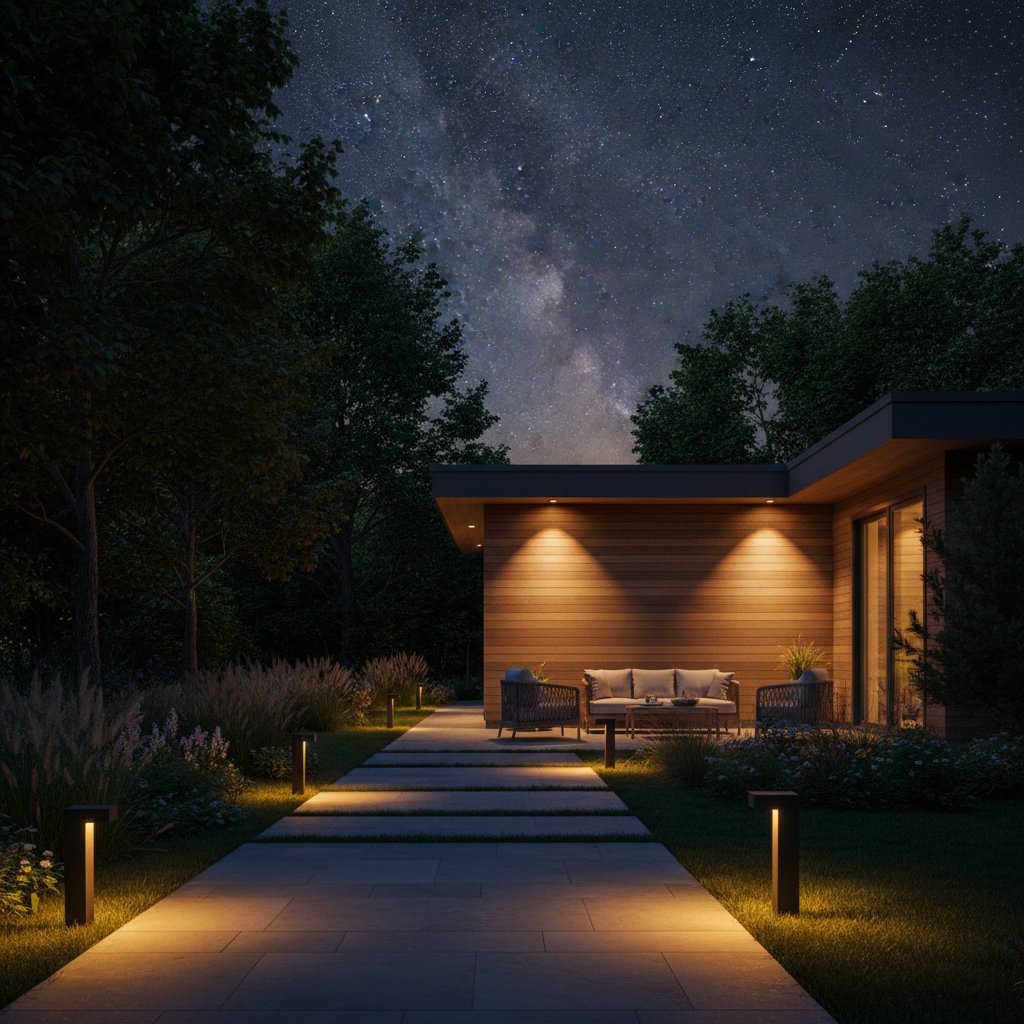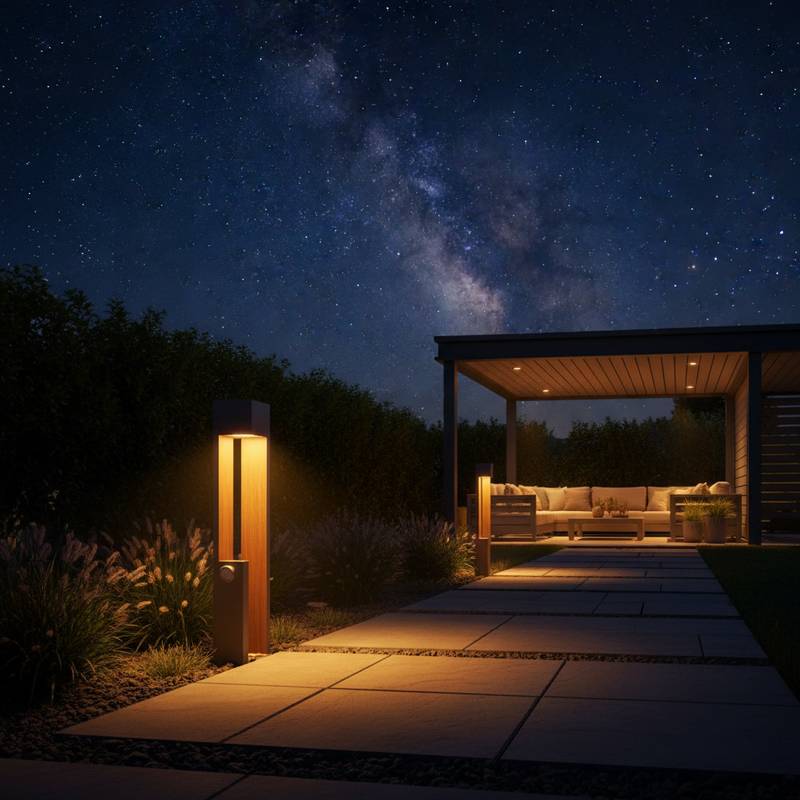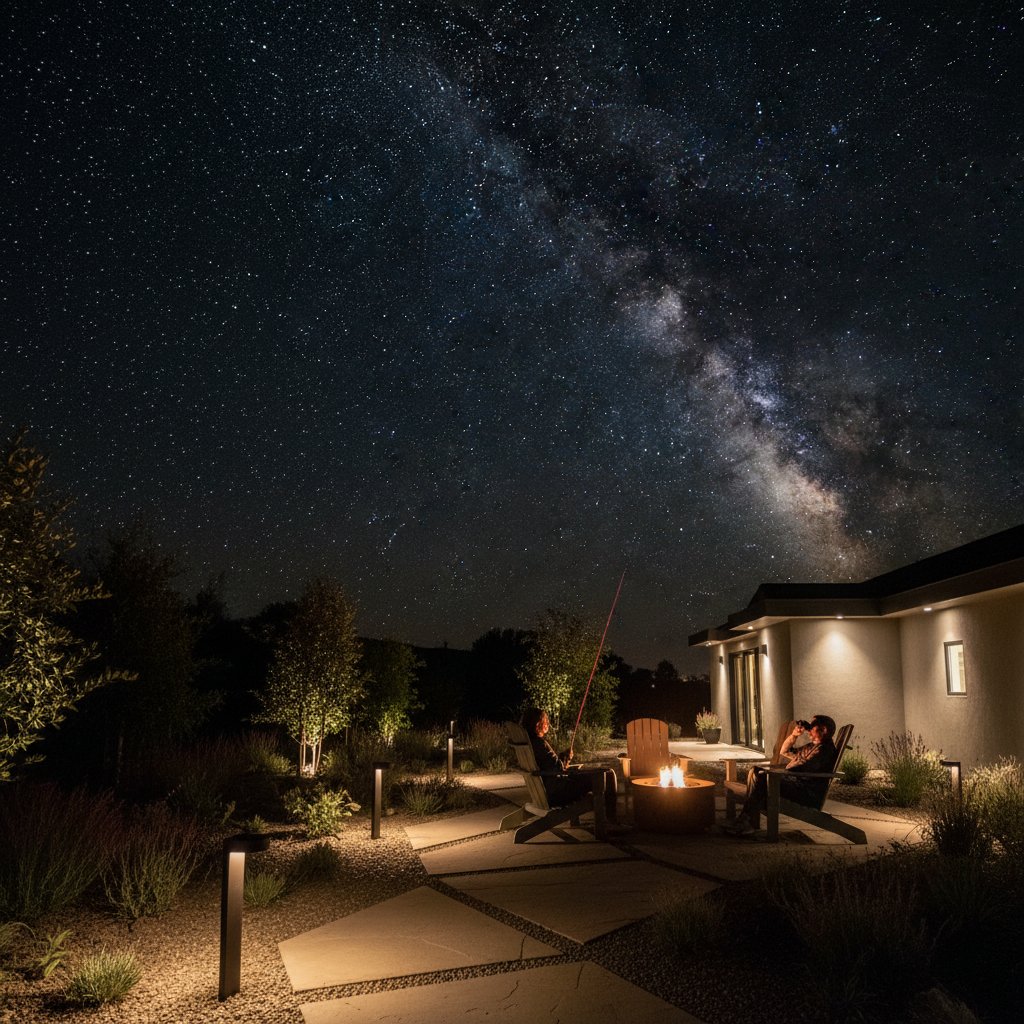Light Up Your Yard Without Polluting the Night Sky
Outdoor lighting enhances safety and aesthetics around the home, yet excessive artificial illumination often leads to unintended consequences. Bright lights can obscure the stars, disrupt local wildlife, and increase energy consumption. Fortunately, a thoughtful lighting strategy allows homeowners to maintain a secure and inviting yard while minimizing light pollution.
This method, known as dark sky lighting, emphasizes precise fixture selection, bulb choices, and strategic placement to direct light downward and reduce spillover. By adopting these principles, individuals can enjoy illuminated outdoor areas at night without compromising the natural darkness overhead.
Principles of Dark Sky Lighting
Dark sky lighting represents a design philosophy rather than a specific set of products. It promotes efficient illumination of outdoor environments by controlling the direction and intensity of light. Key objectives include directing beams toward the ground, applying only necessary levels of brightness, selecting warmer color temperatures for subdued effects, and deactivating or reducing lights during periods of non-use.
Such a system improves visibility on pathways, patios, and driveways without overwhelming the surroundings. Homeowners benefit from reduced electricity costs and extended fixture longevity, contributing to both environmental and financial sustainability.
Choosing Appropriate Bulbs
Bulb selection influences both the intensity and tone of outdoor lighting. Opt for LED bulbs certified as dark-sky compliant or featuring a warm white color temperature of approximately 2700K. These options minimize glare through lower blue light emission, which proves less disruptive to human vision and animal behaviors.
LEDs offer superior durability and energy efficiency compared to traditional bulbs. Select the minimal lumen output required for adequate illumination, such as:
- Path lights: 100 to 300 lumens for subtle guidance.
- Wall-mounted fixtures: 500 to 700 lumens for balanced area coverage.
- Security or driveway lights: 700 to 1200 lumens for targeted brightness.
Steer clear of cool white or daylight LEDs, as their higher intensity exacerbates light trespass and visual discomfort.
Implementing Effective Controls
Integrating automated controls elevates dark sky lighting by ensuring illumination activates only as required, thereby optimizing energy use.
Motion Sensors
Motion-activated sensors suit driveways, entryways, and perimeter areas effectively. These devices remain dormant until detecting activity, then illuminate briefly before reverting to off. This setup conserves power and avoids unnecessary overnight glow.
Timers and Dimmers
Timers schedule lights to deactivate at predetermined times, aligning with typical evening routines. Dimmers enable brightness adjustments to match occasions, such as lowering path lights for relaxed gatherings while preserving safety.
Smart Lighting Solutions
Advanced smart systems allow remote management via mobile applications or voice commands. Users can deactivate overlooked lights, modify intensities, or establish custom schedules. Although initial investments range from $50 to $300 per unit, these technologies yield long-term savings through reduced consumption and enhanced usability.
Navigating Local Regulations
Numerous municipalities enforce outdoor lighting ordinances to safeguard night skies and curb neighborhood glare. These regulations often restrict upward-directed light and dictate fixture specifications to maintain community harmony.
Consult the local building or planning department prior to any installation. Common stipulations encompass:
- Caps on maximum lumen outputs per fixture.
- Requirements for downward-oriented illumination.
- Mandates for shielding to prevent spillover.
- Designated periods for dimming or extinguishing lights.
Compliance not only prevents penalties but also fosters a more serene nocturnal environment for all residents.
Designing Your Dark Sky Landscape
To initiate an outdoor lighting upgrade, conduct a nighttime assessment of the yard. Identify essential illumination zones for navigation and security, while pinpointing sources of wasteful or intrusive light. Retrofit existing fixtures by redirecting beams downward and eliminating cross-boundary spill; replace harsh white bulbs with warm alternatives and install sensors on persistently lit areas.
Consider integrating low-voltage landscape lights along borders or trees, ensuring full cut-off designs that contain light within the property. Budget approximately $20 to $100 per fixture, plus $50 to $200 for controls, to achieve a professional result. This investment transforms the yard into a safe, attractive haven that harmonizes with the night sky, supporting biodiversity and energy conservation for years to come.



